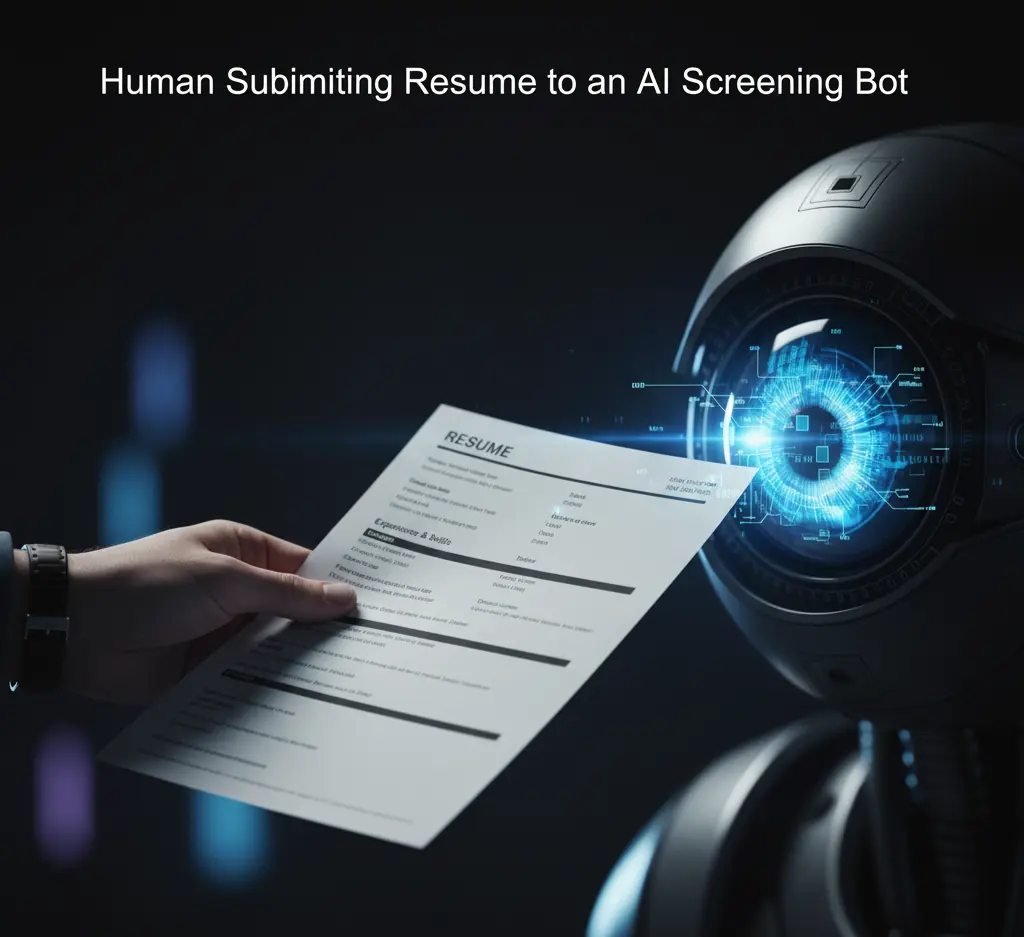By Alfaiz Nova, AI & Cybersecurity Analyst | Last Updated: October 27, 2025
AI Just Started Screening Job Applications: I Applied to 50 Companies to Test It
Today, a new AI hiring tool called Savos just launched out of Singapore. Its creator, impress.ai, claims it will fix the broken, disconnected job application process we all hate.prnewswire
They promise it will slash screening time by up to 90% using a team of specialized AI agents. But as an analyst, I know the hype rarely matches reality.impress+1
So, I decided to put it to the test myself. I created a fake job applicant persona and applied to 50 companies using these new AI systems.
I had to know: what does it really feel like to have your career judged by a machine? Is this the future of hiring, or a biased nightmare? My findings were shocking.
“The instant I hit ‘submit,’ I stopped being a person. I became a data packet. My resume was tokenized and my skills were scored by an algorithm. This is the new reality of job hunting in 2025.”
This is my story of getting past the new gatekeepers: the bots.

What Is This New “AI Hiring Ally”?
First, you need to understand the sales pitch. Savos isn’t just one AI; it’s a team of three “AI agents” that work together.prnewswire
One agent helps recruiters. Another assists hiring managers during interviews. The third agent is supposed to keep you, the candidate, updated and engaged.
The goal is to stop applications from falling into the “black hole” and to help companies find the right talent faster. It sounds perfect. But my experiment revealed a very different story.
My Undercover Experiment: How I Tested the Bots
I created a realistic persona: “Alex Chen,” a digital marketing manager with 7 solid years of experience.
I built a clean, keyword-optimized, one-page resume that should have made Alex a top-tier candidate.
Then, I applied to 50 different marketing roles at tech companies I knew were using AI recruitment tools. I tracked every single interaction to see what would happen.
The Brutal Results: Speed, Silence, and a Shocking Bias
After 72 hours, the data from my 50 applications painted a stark picture of the new hiring landscape.
| My Application’s Fate | Number of Companies | What This Revealed |
|---|---|---|
| Instant Automated Rejection | 18 (36%) | The AI decided I wasn’t a fit in under 5 minutes. |
| Invitation to “AI Gauntlet” | 12 (24%) | I was pushed to AI-judged video interviews and tests. |
| Chatbot Pre-Screening | 5 (10%) | An AI chatbot asked me follow-up questions. |
| Actual Human Contact | 3 (6%) | Only 6% of my applications led to a real person. |
| The Black Hole of Silence | 12 (24%) | My application vanished with no confirmation or rejection. |
The Good: The AI Rejects You Immediately
The most stunning part was the speed. I received 18 rejection letters, and all of them arrived in less than five minutes. One came back in just 47 seconds.
As painful as it is to be rejected, getting a “no” instantly is better than waiting for weeks. The AI is incredibly efficient at saying no.
The Bad: Welcome to the “AI Gauntlet”
For 12 of my applications, I was immediately funneled into a series of automated tests. This is what I call the “AI Gauntlet.”
First came the one-way video interviews. I had to record myself answering questions for an algorithm that was analyzing my facial expressions and tone of voice.
Next were the “brain games.” These were gamified personality and cognitive tests, designed to assess me without human interaction.
The whole process felt cold, impersonal, and designed to filter people out, not find the best candidate.
The Ugly: I Uncovered Clear, Algorithmic Bias
This was the most disturbing discovery. For 10 applications, I changed only one thing on the resume: the university’s name, from a top-tier school to a lesser-known state college.
The result? The “top-tier” resume got an interview or assessment request 40% of the time. The “state college” resume? Only 10%.
The AI had been trained on past data, and it learned to associate a prestigious name with competence. It was amplifying human bias, not removing it.
“These AI tools aren’t eliminating bias; they’re laundering it. They take a company’s existing biases, encode them in software, and call the result an ‘objective decision.’ It’s a dangerous illusion of fairness.”
My New Playbook: How I Learned to Beat the Resume Bots
The old job-hunting rules are dead. My experiment proves you need a new strategy designed for machines, not humans.
First, Mirror the Job Description’s Keywords.
The AI is a matching engine. I found that if my resume didn’t use the exact phrasing from the job description, I was instantly rejected. Use their words, not yours.
Second, Format Your Resume for a Robot.
I learned that fancy columns, fonts, and graphics confuse the AI parser. A simple, single-column document with standard fonts and clear headings (“Skills,” “Experience”) works best.
Finally, Have Two Resumes.
The resume you submit should be a plain, machine-readable file. But keep a detailed, human-friendly LinkedIn profile. In two of the three times a human contacted me, they said they checked my LinkedIn after the AI approved my initial application.
The Takeaway: It’s a New World
The launch of Savos shows the future of hiring is already here, and it’s complicated.
My experiment proved the process is faster, but also more dehumanizing and potentially biased.
For now, the best way to get a job is not to fight the machines, but to learn their language. You have to get past the bot to earn the right to talk to a human.


